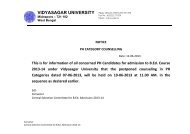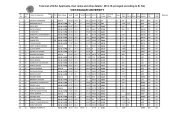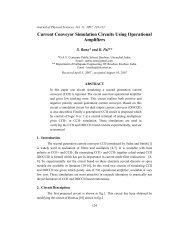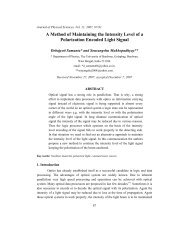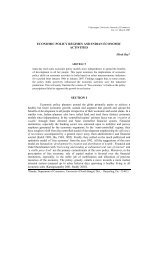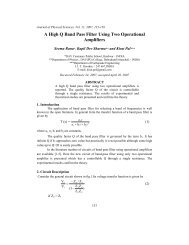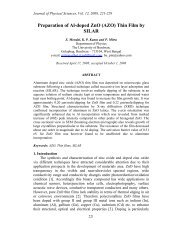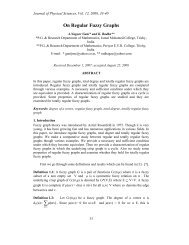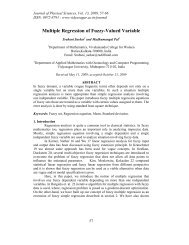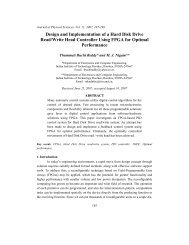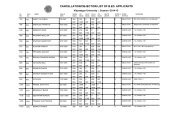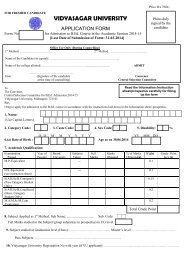VIDYASAGAR UNIVERSITY JOURNAL OF COMMERCE
VIDYASAGAR UNIVERSITY JOURNAL OF COMMERCE
VIDYASAGAR UNIVERSITY JOURNAL OF COMMERCE
Create successful ePaper yourself
Turn your PDF publications into a flip-book with our unique Google optimized e-Paper software.
Vijay Kumar Mishra<br />
Source: Department of Agriculture and Cooperation, Ministry of Agriculture, Govt. of India.<br />
WTO and Farming – Encouraging Liberalization<br />
World Trade Organization is an internationally recognized trade organization, created by an<br />
international treaty, established in 1995. It has a legal status and has a right to enforce the<br />
rules of international trade. Its basic objective is to promote trade in the international market<br />
by the removal of barriers. India is one of the founder members of WTO and also hopes to<br />
garner the advantages associated with its association. WTO replaces GATT and promotes<br />
multilateral trade in goods, services, protection of intellectual property rights, foreign<br />
investments, etc. . It has fixed a set of rules and regulations which are mutually agreed upon<br />
by the member-nations. Agreements by member-countries are binding on all the membernations<br />
of WTO and if any member dishonours them then complaint can be lodged with the<br />
Dispute Settlement Body of WTO.<br />
India’s joining of WTO was not a bandwagon effect, it was a rational discretion based on the<br />
advantages associated with it. Economic reforms came in 1991 and Liberalization,<br />
Privatization and Globalization (LPG) process was initiated. To make the LPG process<br />
realize its full potential it was imperative to join WTO. It promises to help in the process of<br />
enhancing the foreign trade, increasing the inflow of foreign investments, inflow of better<br />
technology and most importantly the end of quota system. The biggest advantage associated<br />
with an organization like WTO is reaping the benefits of multilateral trade i.e., when a trade<br />
agreement is signed between member-countries, it promotes foreign trade of one country<br />
with all other member-countries which have signed this agreement. Before the formation of<br />
WTO, trade was bilateral whereas WTO new promotes multilateral trade. If the multilateral<br />
trading system would not have happened due to WTO then India would have to enter into<br />
separate trade agreements with each nation. The process of Indian economy’s globalization<br />
also got further momentum with WTO’s promotion of free trade through the trading<br />
agreements. India also benefitted with the inflow of foreign investments due to globalization<br />
process.<br />
WTO’s Agreement on Agriculture (AoA) talks of rules and regulations regarding trade in the<br />
farm sector products. The AoA relates to domestic subsidies, export subsidies and market<br />
access commitments. The agreement asks for withdrawing domestic and export subsidies<br />
and opening up of the national markets for international competition. To further enhance<br />
trade the agreement promotes the replacement of non-tariff barriers with tariff and the same<br />
to be progressively reduced in a stipulated time period. The basic objective regarding<br />
reducing government support (via subsidies) is to check overproduction of goods. The<br />
surplus products are generally disposed of through export subsidies and this discourages the<br />
main aim of WTO, which is free and fair trade. The subsidies issues are still under<br />
negotiations and it is hoped that a consensus would be arrived at soon. Once the level<br />
playing field is made, huge options will emerge for the growth of the farm sector. In essence,<br />
the AoA asks for liberating the farm sector from the government support to operate it<br />
optimally.<br />
94 Vidyasagar University Journal of Commerce



